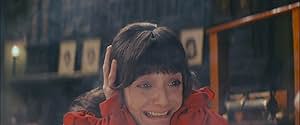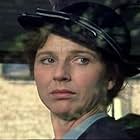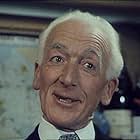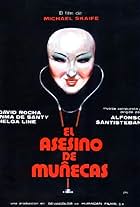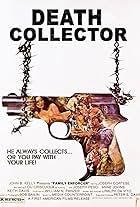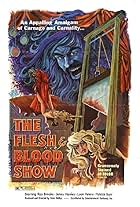IMDb RATING
6.2/10
3.3K
YOUR RATING
English country squire Sir Hugo Cunningham searches for immortality by literally 'bottling up' the Spirit of the Dead, or Asphyx.English country squire Sir Hugo Cunningham searches for immortality by literally 'bottling up' the Spirit of the Dead, or Asphyx.English country squire Sir Hugo Cunningham searches for immortality by literally 'bottling up' the Spirit of the Dead, or Asphyx.
- Director
- Writers
- Stars
Joe Wadham
- Police Officer at Accident Scene
- (uncredited)
- Director
- Writers
- All cast & crew
- Production, box office & more at IMDbPro
Featured reviews
Greetings, salutations, and welcome to my considerations and recommendation of The Asphyx.
Story: 1.75/2 - Direction and Pace: 2.75/4 - Performances: 1.25/2 - Enjoyment: 1.50/2
Total 7.25/10
The concept of this story is superb as it's based on fact. Since the invention of the camera, people have taken photographs of their loved ones. And some have chosen to try and capture the exact moment of death. One such man is Sir Hugo Cunningham. He and two other photographers capture one man's passing and each of the film slides holds the same smudge to the left of the dying man. How could this be? Cunningham believes he's captured the Ancient Greek spirit the Asphyx, which comes to take a person's soul at the moment of death. When he loses his son and fiance in a boating accident, which he captures on his new invention - the moving picture camera, he sees the very same smudge slide into his son's head. Of course, he's now a man on a mission. If the Asphyx is an entity, then can he not capture it, and once caught would that mean the person tethered to it would be immortal?
The writers give the audience a splendidly structured tale of one man's descent into obsession and the revenge that follows. Though many strong and credible characters are created, they're gone too quickly as the writers focus on the two principal individuals. It would've been nice to have more of the relationship between Giles and Christina Cunningham. Though not related, the two have grown up as brother and sister. Giles is adopted. Which is lucky because the couple is in love, or so we're told. More warmth and emotion between them would only have added more potency. Luckily, there's more than enough to keep the viewer enthralled. One example is the hanging scene: We're given different moral viewpoints by the principal characters. Both think hanging is inhuman, and though one cannot watch, the other cannot wait to film the event. Another is the method utilised to capture the Asphyx. These scenes and details are well thought-out and delivered.
The director isn't too exceptional in his cinematography. However, he exploits every moment in the movie superbly. He has a keen eye for good composition and what's required to make the movie work. I especially adored the boating on the river scene. He frames every shot splendidly and captures the beautiful mistiness of the day, which adds a gossamer atmosphere to the segment. And for an early 1970s movie, the special effects are decent enough. They work wonderfully well with the context. Redone with today's CGI, there's every possibility they'd be overcooked. The image's subtleness helps to solidify the idea of an ethereal entity. Sadly, it's these segments that needed capturing better. They required more tension, especially in the first few capture scenes. Sadly, they don't grip the viewer as hard as they should. Another letdown is the soundtrack. Though I liked the classical piece used, by the picture's finale, it was overused. More fitting music was required to fit, and help set, the intended mood of the scenes. It's a soft lilting piece, yet it plays during the finale, where it doesn't fit.
On the whole, the cast is excellent. Though, I believe Robert Powell portraying Giles, undersells his part. I like Powell as an actor. He's usually robust and prominent in his portrayals, but with Giles, it's all a bit wishy-washy. Whereas Robert Stephens as Hugo has a couple of scenes where he makes out like a soldier on the front line and over the top, he goes.
Though The Asphyx doesn't make a must-watch film, it's interesting enough to make it a one-to-watch. The story is pleasantly in-depth and logically structured, making the events easier to believe. The characters are well-written and well-acted. And the direction is a good notch or two above average. If you've not watched this one yet, I suggest you treat yourself and find a copy streaming near you. And should you like Steampunk, take a look-see, and you'll notice a few "roots" in the paraphernalia the scientists use.
Please check out my Absolute Horror and The Final Frontier lists to see where I ranked the movie.
Take Care & Stay Well.
Story: 1.75/2 - Direction and Pace: 2.75/4 - Performances: 1.25/2 - Enjoyment: 1.50/2
Total 7.25/10
The concept of this story is superb as it's based on fact. Since the invention of the camera, people have taken photographs of their loved ones. And some have chosen to try and capture the exact moment of death. One such man is Sir Hugo Cunningham. He and two other photographers capture one man's passing and each of the film slides holds the same smudge to the left of the dying man. How could this be? Cunningham believes he's captured the Ancient Greek spirit the Asphyx, which comes to take a person's soul at the moment of death. When he loses his son and fiance in a boating accident, which he captures on his new invention - the moving picture camera, he sees the very same smudge slide into his son's head. Of course, he's now a man on a mission. If the Asphyx is an entity, then can he not capture it, and once caught would that mean the person tethered to it would be immortal?
The writers give the audience a splendidly structured tale of one man's descent into obsession and the revenge that follows. Though many strong and credible characters are created, they're gone too quickly as the writers focus on the two principal individuals. It would've been nice to have more of the relationship between Giles and Christina Cunningham. Though not related, the two have grown up as brother and sister. Giles is adopted. Which is lucky because the couple is in love, or so we're told. More warmth and emotion between them would only have added more potency. Luckily, there's more than enough to keep the viewer enthralled. One example is the hanging scene: We're given different moral viewpoints by the principal characters. Both think hanging is inhuman, and though one cannot watch, the other cannot wait to film the event. Another is the method utilised to capture the Asphyx. These scenes and details are well thought-out and delivered.
The director isn't too exceptional in his cinematography. However, he exploits every moment in the movie superbly. He has a keen eye for good composition and what's required to make the movie work. I especially adored the boating on the river scene. He frames every shot splendidly and captures the beautiful mistiness of the day, which adds a gossamer atmosphere to the segment. And for an early 1970s movie, the special effects are decent enough. They work wonderfully well with the context. Redone with today's CGI, there's every possibility they'd be overcooked. The image's subtleness helps to solidify the idea of an ethereal entity. Sadly, it's these segments that needed capturing better. They required more tension, especially in the first few capture scenes. Sadly, they don't grip the viewer as hard as they should. Another letdown is the soundtrack. Though I liked the classical piece used, by the picture's finale, it was overused. More fitting music was required to fit, and help set, the intended mood of the scenes. It's a soft lilting piece, yet it plays during the finale, where it doesn't fit.
On the whole, the cast is excellent. Though, I believe Robert Powell portraying Giles, undersells his part. I like Powell as an actor. He's usually robust and prominent in his portrayals, but with Giles, it's all a bit wishy-washy. Whereas Robert Stephens as Hugo has a couple of scenes where he makes out like a soldier on the front line and over the top, he goes.
Though The Asphyx doesn't make a must-watch film, it's interesting enough to make it a one-to-watch. The story is pleasantly in-depth and logically structured, making the events easier to believe. The characters are well-written and well-acted. And the direction is a good notch or two above average. If you've not watched this one yet, I suggest you treat yourself and find a copy streaming near you. And should you like Steampunk, take a look-see, and you'll notice a few "roots" in the paraphernalia the scientists use.
Please check out my Absolute Horror and The Final Frontier lists to see where I ranked the movie.
Take Care & Stay Well.
"The Asphyx" a/k/a "The Horror of Death" is one of the most original yet unheralded English horror films. Set in 1870's England, aristocrat Sir Hugo (Robert Stephens) accidentally photographs an entity (mythological name Asphyx) entering a person's body at their death. Sir Hugo theorizes that each person has their own Asphyx and that if the entity can be imprisoned outside the body, the person will be immortal. Can you guess what happens next?
From the physiological standpoint, the concept is not that different from the idea of vampires and zombies; with the same need to suspend disbelief to really enjoy things. Although like the implications of time travel, half the fun is speculating on the ramifications of the idea.
There is a pleasant and very haunting score and the story has a nice touch of irony as Sir Hugo's first experimental subject is his eventual downfall.
The real strength of this film is the production design. Considerable effort went into the meticulously constructed sets and there was much attention to detail in the various scientific apparatus and instruments. While the historical accuracy of these advanced devices is suspect, they are certainly no harder to accept than the basic premise. All looks great on the big screen and is probably fine on the letter boxed DVD, but the VHS tape is of marginal quality and the 4x3 aspect ratio does not do justice to the frame.
Few films from the era that did a better job of filling their frames than "The Asphyx" (credit to Academy award winning cinematographer Freddie Young), but this just magnifies the problems of the full-screen version. It appears that the 1989 Interglobal Home Video trimmed nine minutes from the film and was recorded at the LP speed, so you should avoid that one if possible.
Then again, what do I know? I'm only a child.
From the physiological standpoint, the concept is not that different from the idea of vampires and zombies; with the same need to suspend disbelief to really enjoy things. Although like the implications of time travel, half the fun is speculating on the ramifications of the idea.
There is a pleasant and very haunting score and the story has a nice touch of irony as Sir Hugo's first experimental subject is his eventual downfall.
The real strength of this film is the production design. Considerable effort went into the meticulously constructed sets and there was much attention to detail in the various scientific apparatus and instruments. While the historical accuracy of these advanced devices is suspect, they are certainly no harder to accept than the basic premise. All looks great on the big screen and is probably fine on the letter boxed DVD, but the VHS tape is of marginal quality and the 4x3 aspect ratio does not do justice to the frame.
Few films from the era that did a better job of filling their frames than "The Asphyx" (credit to Academy award winning cinematographer Freddie Young), but this just magnifies the problems of the full-screen version. It appears that the 1989 Interglobal Home Video trimmed nine minutes from the film and was recorded at the LP speed, so you should avoid that one if possible.
Then again, what do I know? I'm only a child.
Immortality is a virtue that man has sought after since the dawn of history and now one man has found it. I originally rented this movie because, quite frankly, I was intrigued by the tag line. And boy did my interest pay off. I found one of the best films I have ever seen. From the beginning that you won't understand until they end to the subtle plot turns along the way. This film raises the questions " Once you've obtained immortality, what's next?" and "In the end, is it really worth it?"
I bought a copy of this thru eBay. It was the old VHS, untouched by digitization. I would recommend that one purchase the newer DVD. I have heard that the color and saturation is much improved.
As for Sir Robert's performance, and Mr. Powell's: Quite extraordinary. Even the effects are quite futurist for the date that this was filmed.
There is a bit of violence, involving two men and a guinea pig, so be aware of some disgust with relation to that. But by far, if you want to be enthralled by Sir Robert, and coo at Powell, you're in for a rare treat. I can't believe this one was out there for so long before I found it! Truly needs to be placed in the "Hall of Horror", since it is nearly on the level of the old Vincent Price works, like "Mask of Red Death" and "The Raven". Get it, and treasure it as one of Sir Robert's few performances still available.
As for Sir Robert's performance, and Mr. Powell's: Quite extraordinary. Even the effects are quite futurist for the date that this was filmed.
There is a bit of violence, involving two men and a guinea pig, so be aware of some disgust with relation to that. But by far, if you want to be enthralled by Sir Robert, and coo at Powell, you're in for a rare treat. I can't believe this one was out there for so long before I found it! Truly needs to be placed in the "Hall of Horror", since it is nearly on the level of the old Vincent Price works, like "Mask of Red Death" and "The Raven". Get it, and treasure it as one of Sir Robert's few performances still available.
When The Asphyx was released in 1973, The Exorcist was about to change the landscape of horror forever, moving the genre away from subtlety and into the realm of graphic effects and makeup. That's one of the reasons why The Asphyx was a box-office flop, fondly remembered by a select few who never forgot this quirky little "thinking man's horror film" (as Variety called it), in which a 19th-century British philanthropist and amateur psychic researcher embarks on a fateful quest for immortality. Sir Hugo Cunningham (nicely played by Robert Stephens) has a morbid hobby of taking photographs of dying people, and this leads to his discovery of a nebulous spirit of the dead--known in mythology as the Asphyx--that appears (only visible on photographic plates) at the moment of death. Sir Hugo becomes obsessed with capturing his own Asphyx and thus ensuring that he cannot die, but of course this is an ill-fated ambition that puts Sir Hugo on a ruinous path to destruction and death. With its talky, literate script, well-drawn characters, and fascinating themes, The Asphyx bears closer resemblance to the Hammer horror films that became passé in the early and mid-1970s. The chills are subtle but effective under the direction of Peter Newbrook, and the widescreen cinematography by Freddie Young (whose credits include Lawrence of Arabia) adds polish and elegance to the proceedings. Filled with foreboding atmosphere, this is an intelligently conceived horror film that relies more on story than shocks, although the screeching Asphyx is eerily haunting. Kudos to Allday Entertainment for producing this DVD--The Asphyx has been rescued from obscurity, painstakingly remastered in its original 2.35:1 aspect ratio for discerning connoisseurs of high-class horror.
Storyline
Did you know
- TriviaThe main credits state that the film's soundtrack was recorded using a 4-channel quadraphonic sound system. Sadly, there appears to be no evidence of it ever being exhibited in this manner.
- GoofsToward the end of the film Robert Powell picks up a glass beaker. It has the Pyrex stamp on it and its volume is stated as 600ml. Victorian England used imperial (non-metric) measures, and Pyrex was not invented until 1915.
- Quotes
Sir Hugo Cunningham: I obey God's will, my friend, my old friend, my eternal and everlasting friend...
- Alternate versionsThe film was originally shot in Todd-AO 35, a wide-screen process which is normally viewed at 2.35:1. The 1995 UK video featured a much shorter print and missed around 12 minutes of footage including dialogue scenes, an anti-hanging protest before the execution, and the removal of a scene showing the now-immortalized guinea pig being released from its cage. The 2004 Anchor Bay UK DVD features the same print and is presented in an anamorphic 1.85:1 ratio and also uses a pan & scan technique, thus cropping much of the print into a false version of wide-screen. The 2010 Odeon DVD features both the shorter and longer original prints in genuine widescreen.
- ConnectionsFeatured in Elvira's Movie Macabre: The Horror of Death (1986)
- How long is The Asphyx?Powered by Alexa
Details
- Runtime1 hour 23 minutes
- Aspect ratio
- 2.35 : 1
Contribute to this page
Suggest an edit or add missing content









